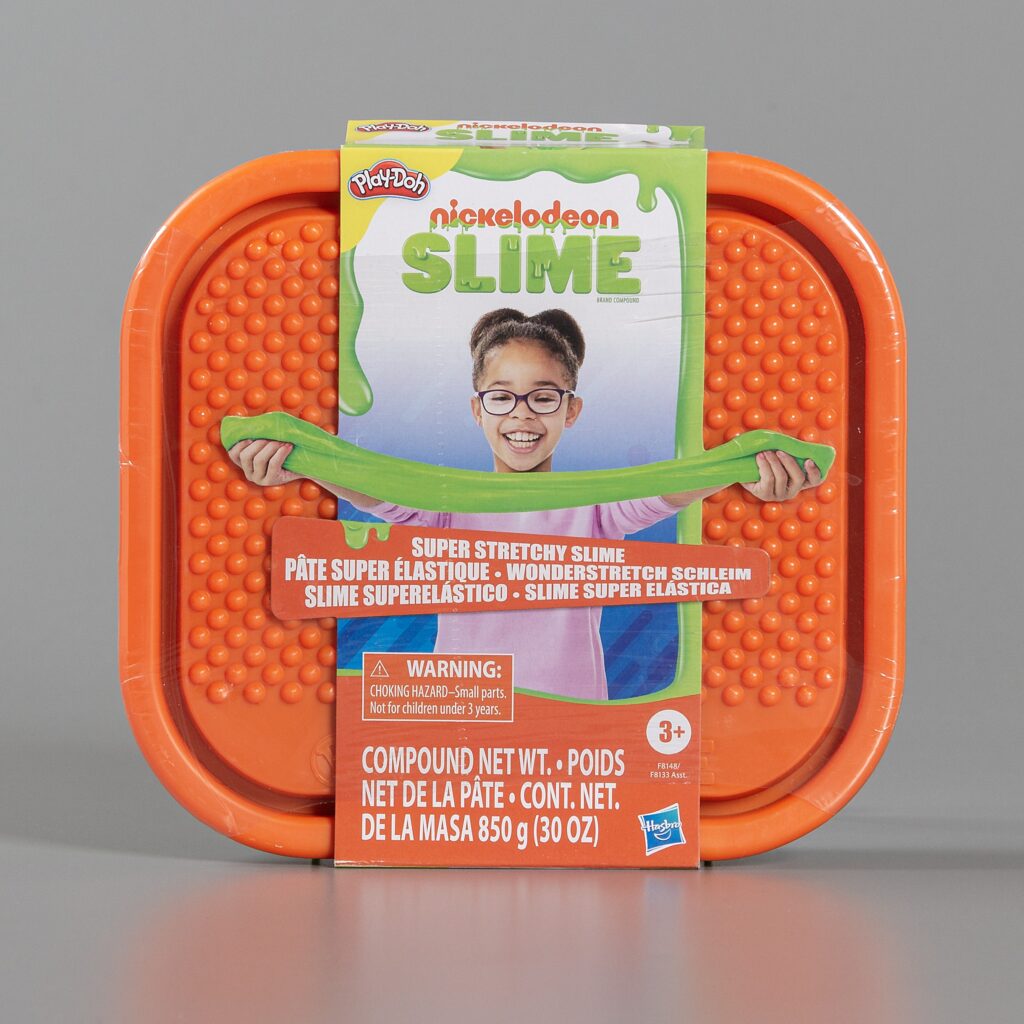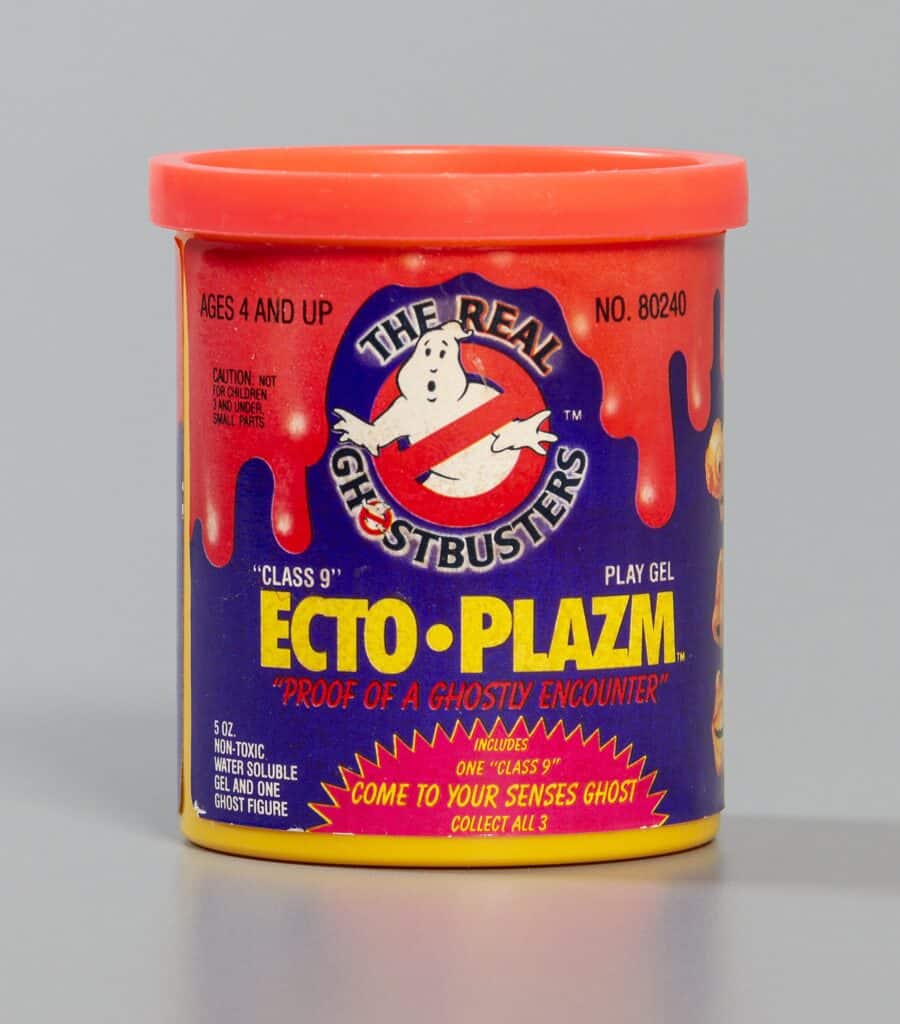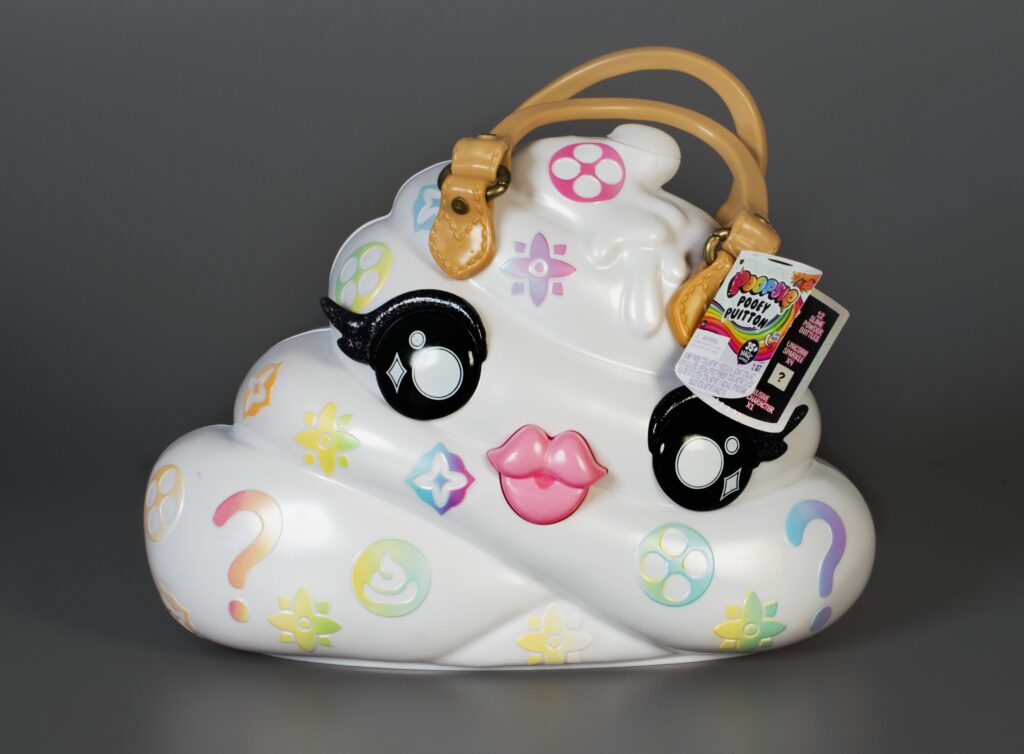I experience many emotions when my young kids ask to make slime. I usually greet their requests with enthusiasm before quickly dissolving into panic as I watch the glue, shaving cream, glitter, and bingsu beads stick to various surfaces around the room. Slime is an extension of an established chemical process. When sodium tetraborate (borax) combines with guar gum or polymers, it turns into a gelatinous substance that can be stretched, squeezed, broken apart, and molded back together. When the recipe works, it’s a beautiful lesson in chemistry and magic.

In 1976, Mattel introduced Slime—a neon green jiggly substance sold in small plastic trashcans—but it did have some similar precursors. Ten years prior in 1966, Wham-O introduced Super Stuff: “not a dough or a putty, but a new, new stuff” according to the packaging. This pink, moldable material could be stretched and popped and squeezed just like slime. While Super Stuff was popular, Mattel’s Slime flew off the toy shelves and sparked dozens of copycats.


Slime itself was so popular that it became a major component of other playthings. Kenner’s line of Ghostbuster toys provided ample opportunities to incorporate slime known as Ecto-plazm. Mini Goopers, Brain Matter and Stomach Stuff, held an ounce of the goop, while Slimer loved to give “Ecto-Plazm kisses to his hero friends.” For the Teenage Mutant Ninja Turtles toys, Retromutagen Ooze, the chemical “stuff” that created the heroes and several of their villainous foes came packaged in a variety of playsets. The popularity of gross-out toys, often packed with slime, peaked in the 1980s. In a 1986 San Diego Union article, a spokesperson for the American Toy Institute reported “the age of the ugly, gross-out toy is upon us. The product looks awful, but sells wonderfully.” Slime served as a gelatinous accessory to many toys often considered crude by parents and absolute perfection by kids curious about science, absorbed in shock value, and captivated by gross-out humor. Galoob Toys’ Bad Eggz Bunch packed tiny figures in slime-filled eggs and slime poured out of the mouth of Fungus the Bogeyman from Acamas Toys. Nickelodeon soon sold Gak, stocking stuffer-sized containers of colorful slime that, according to advertisements, could release flatulence noises when poked. Slime also enjoyed guest-star treatment on You Can’t Do That on Television and Nickelodeon’s Double Dare.

Today, a new generation of slime enthusiasts have embraced the toy beyond its green, gross out lineages. Thanks to social media and DIY enthusiasts, slime can be glitter-bombed, shaped like cupcakes, or filled with hidden miniature toys. MGA Entertainment’s Poopsie Pooey Puitton Surprise Slime Kit comes packaged in a glammed-up poop emoji-shaped purse. OG Slimes has 1.5 million Instagram followers and features a variety of ASMR (autonomous sensory meridian response) content with fancy slimes like Meteor Shower. Many modern slimes are perfumed and pretty. And the textures range from smooth to sticky to crunchy. Butter slime spreads like butter and feels creamy because of the addition of airdry clay, while cloud slime feels fluffy likely because of the addition of inflatable snow.
Though slime continues to carry icky connotations to slugs and swamps—all part of the fun for some—the toy offers meaningful play in different ways too. My kids enjoy the impromptu chemistry experiments and making slime requires them to focus and plan, which helps develop executive functioning. And despite the messy clean-up, I know that play with slime provides the ultimate sensory experience—you can stretch it, customize its colors, and add visually stimulating mix-ins like glitter and jelly crystals. Its continued popularity, paired with decades of innovation, has earned Slime a place as a 2025 inductee in the National Toy Hall of Fame.


